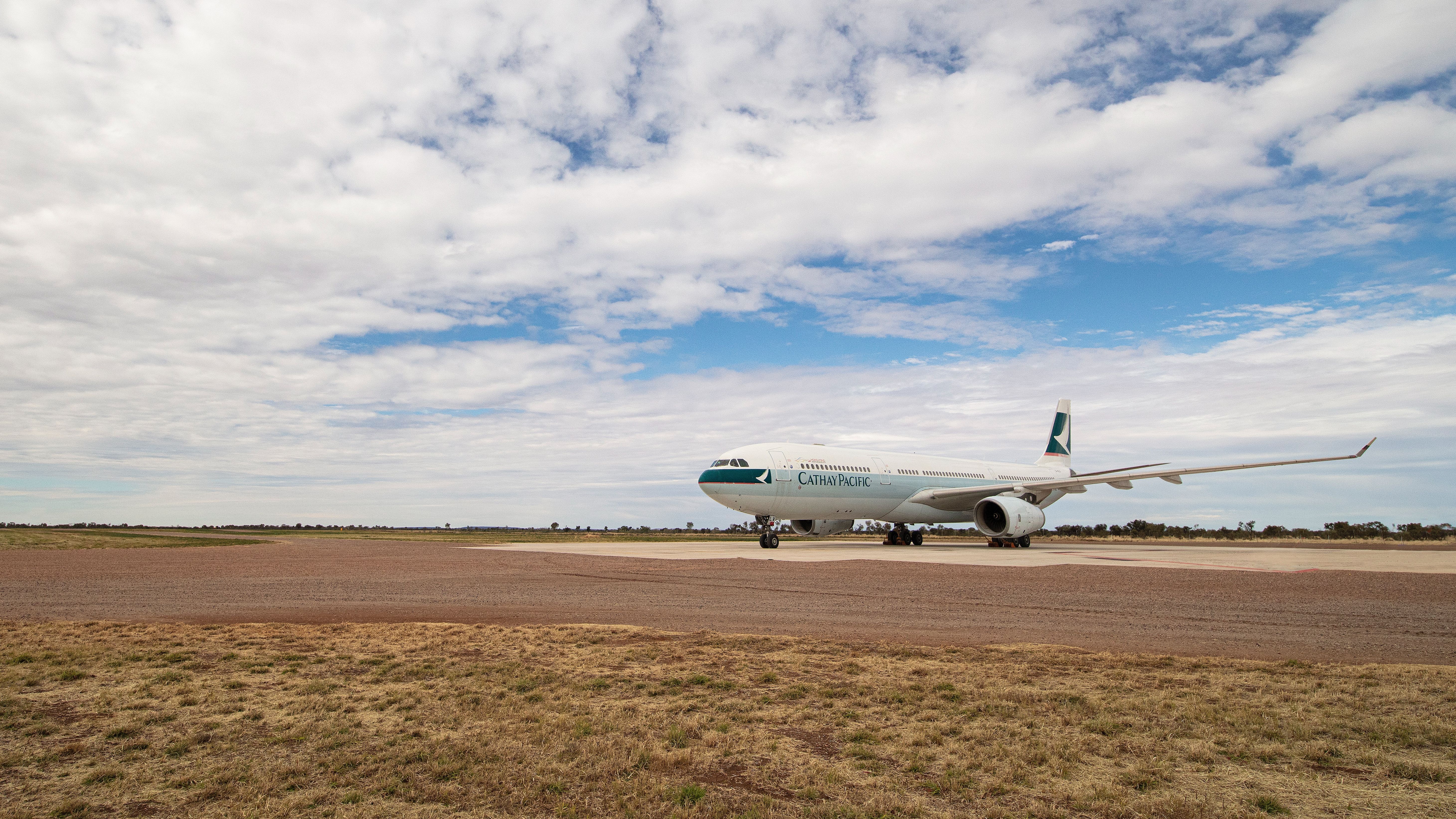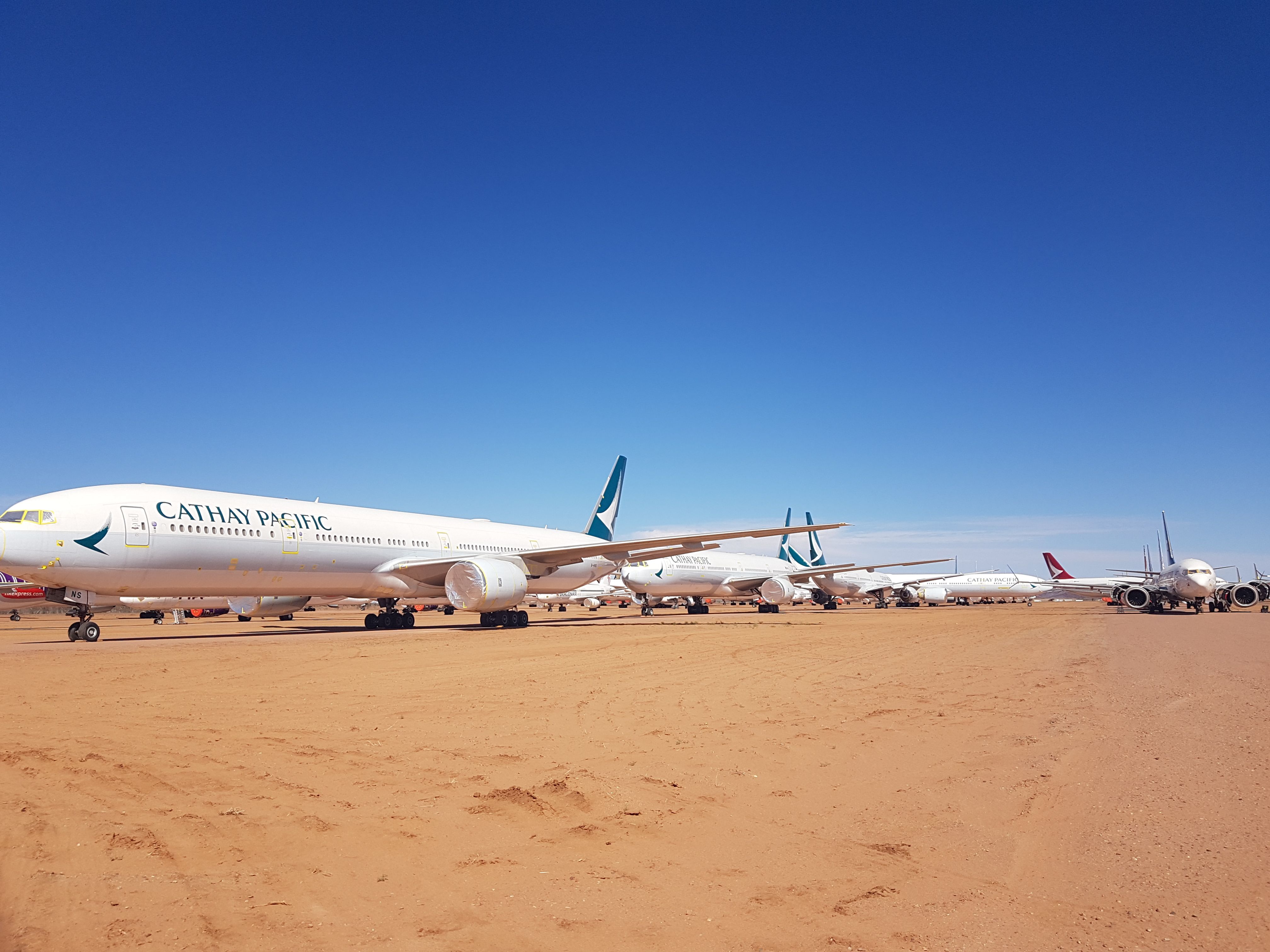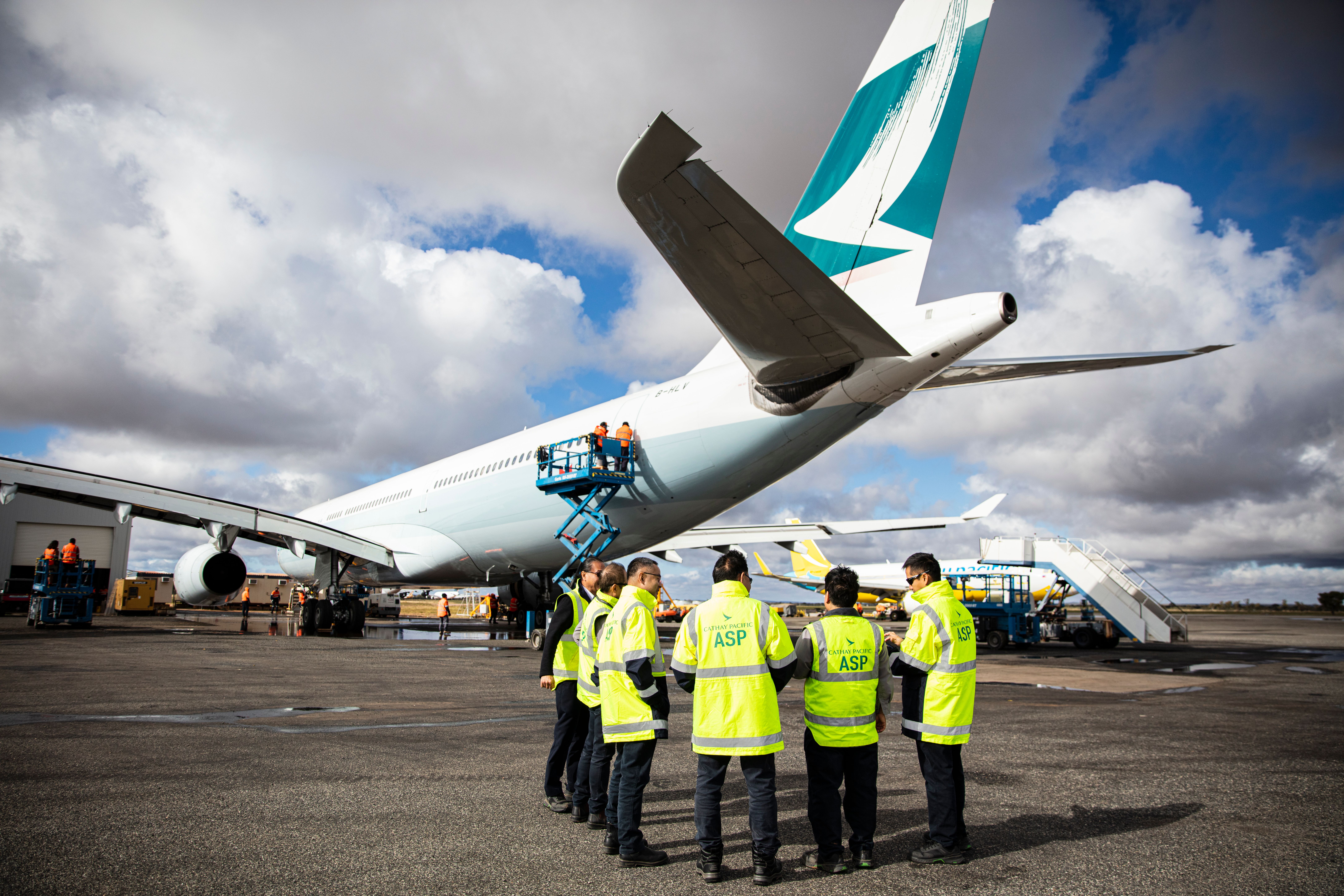Summary
- End of an era: The last Cathay Pacific aircraft leaves Alice Springs after almost 4 years.
- No easy feat: Aircraft storage in Alice Springs required meticulous care and attention.
- Step forward: Cathay aims to recover to full pre-pandemic capacity in the first quarter of 2025.
In a somewhat ironic turn of events, the first Cathay Pacific pandemic-era aircraft to be stored in Australia’s Red Centre was also the last one to leave, almost four years after it arrived. While most airlines sent their aircraft off to the legendary boneyards in the Californian desert, Cathay Pacific kept theirs closer to home by sending them to Alice Springs to ride out the storm.
The red dust days are over
When the COVID-19 pandemic ground aviation to a halt, airlines had to scramble to find somewhere to store or park their aircraft, which was no easy task for Hong Kong-based Cathay Pacific. With a relatively small home base situated on a small island, the airline’s management had to quickly find somewhere dry with the right facilities and people in place to look after their modern fleet of expensive jets.
Everything You Need To Know About Australia’s Aircraft Boneyard In Alice Springs
In 2014, Alice Springs became home to the largest aircraft boneyard outside of the United States.
Today, the final Cathay Pacific (Cathay) aircraft departed from Australia’s Alice Springs Airport, the base for Asia-Pacific Aircraft Storage (APAS), where it had been stored and maintained since 2020. The 2003 Airbus A330-300, registration B-HLV and MSN 0548, departed Alice Springs Airport (ASP) at 11:09 and, after a short hop of 1:46 hours, landed at Darwin International Airport (DRW) at 12:55.
The A330 had a short transit to the Top End of Australia before departing Darwin at 14:17 on its way to Hong Kong International Airport (HKG), where it is expected to land at 18:13 local time. It entered the APAS facility on July 28, 2020, and was one of 76 aircraft Cathay had parked there.
Photo: Cathay Pacific
While that chapter ends, the aircraft’s return marks a significant step forward for Cathay as it works to recover to 100% of pre-pandemic capacity in the first quarter of 2025. It is also a time of reflection as the airline looks back on the mammoth task, with its on-site teams performing more than 16,000 periodic checks and spending 800,000 labor hours maintaining the fleet of parked aircraft.
This was no easy task
Cathay Pacific Regional Head of Engineering Southwest Pacific Adam Nelson said the focus throughout has been on ensuring the aircraft were meticulously kept in top condition during storage and then safely reactivated before their ferry flight back to Hong Kong.
“The fact that every aircraft reactivation, hangar check and subsequent entry back into service has been safe and smooth is testament to the hard work, care and attention the team has put in over the last four years. We had team members literally move themselves and their families to the desert or come out of retirement to help with this once-in-a-lifetime project, and their dedication has been extraordinary.”
Photo: Cathay Pacific
Alice Springs was chosen due to its low humidity, on-site maintenance facilities, and long distance from the ocean. Five Cathay engineers provided oversight and support to more than 100 on-site engineers and mechanics who performed periodic checks of varying complexity at seven days, 14 days, 30 days, and 60 days and continued up to two years.
With aircraft returning to service at different times, the reactivation process was a joint project between the on-site teams and Cathay engineers in Hong Kong. Once an aircraft was chosen for reactivation, there was a six-month lead time for working with the manufacturer to do a technical assessment of what was needed, and every aircraft had a tailored package of maintenance tasks developed.
Photo: Cathay Pacific
The reactivation work in Alice Springs took one to two months per aircraft and included landing gear swings, engine runs, structural inspections, lubrication tasks and functional tests of all aircraft components and systems. Once reactivated and airworthy, the aircraft was ferried back to Hong Kong for scheduled checks before returning to service.
While the Cathay aircraft were in storage between 2020 and today, more than 40,000 parts, including components, tooling, a set of aircraft jacks, and specialist support equipment, were shipped to Alice Springs. The team based in Alice Springs will spend the next couple of months finishing their activities and packing up before heading home.
Are you surprised how long it takes to return an aircraft to service? Let us know in the comments.





